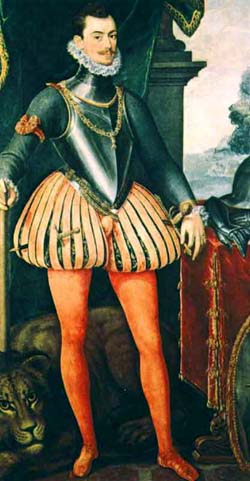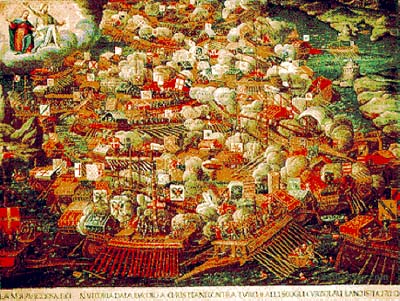AMDG
ARTICLE REVIEW:
THE CATHOLIC SPIRIT OF CHRISTOPHER COLUMBUS
The documented
article by Benjamin Broussard in the magazine, Crusade published by the organization, “Tradition, Family and
Property” was of great interest (see http://www.tfp.org/magazines/crusade_mag_vol_119.pdf).
It
seems that revisionist historians have been painting a negative image of
Columbus (1451-1506)……. mistreating, enslaving, exploiting the
Indians, etc. while viceroy and governor of the settlements until 1500. The evidence is contradictory. According to Broussard, Columbus insisted on
fair treatment of the Indians, a policy which created enemies among abusive
settlers who falsely maligned him. Thus
Columbus was sent back to Spain in chains, but the King and Queen exonerated
him and apologized for the misunderstanding.
Broussard claimed that Bartolomé de las Casas (1484 – 1566), a noted eye
witness since 1502 and an outspoken advocate of humane treatment of the
Indians, spoke highly of Columbus whom his family knew; another author claimed
de las Casas wrote to the contrary. If
so, he could only write by hearsay since Columbus left two years before his
arrival. Even if some accounts from the
period seem to give some credence to these charges, we must consider the
mentality of the times. How much control
Columbus had as governor is another question.
In
any event it was refreshing to have some fascinating glimpses, generally
overlooked by contemporary historians, into the person of Christopher Columbus
and his underlying motivations in pursuing his innovative idea of reaching the
Far East by traveling west, although he underestimated the circumference of the
earth by 25% (the earth as a sphere was already accepted) and found a new
world. Accounts of the day consistently
describe Columbus as a large and physically strong man of some six feet or more
in height, easily taller than the average European of his day.
Well known is the courage of Columbus in sailing through
uncharted and perhaps dangerous waters.
He was very entrepreneurial in obtaining financing with great
perseverance and attempting to chart a new and a shorter trade route to the
riches of China and India that would open up profitable trade opportunities. Even children know that the Marco Polo’s “Book of the Marvels of the World” about the
Emperor Kubla Kahn and the riches of China intrigued Columbus and stimulated
his imagination.
 |
| The Inspiration of Christopher Columbus by José María Obregón, 1856 |
Evangelization -
His Primary Motivation. What particularly intrigued Columbus was that
the Great Kahn questioned the Polos about life in Western Europe and the
Catholic Faith in which he took an interest.
In fact, he sent a letter with them to Pope Clement IV, requesting 100
missionaries to instruct his people.
However, the Pope died and it was a while before a new pope was elected
and the Kahn’s request was never fulfilled.
Thus Columbus believed that a shorter and easier route to the Far East
would present great opportunities for evangelization. This was a very convincing selling point for
the backing of King Ferdinand and Queen Isabella.
This motivation is obvious when one
understands the deep faith that permeated every aspect of the life of
Christopher Columbus and was central to his mission of exploration. His faith was the source of his greatness and
influenced his every action. Bartolomé
de las Casas wrote: “He observed the fasts of the church most
faithfully, confessed and made communion often, read the Divine Office like a
churchman, hated blasphemy and profane swearing, and was most devoted to Our
Lady and to the seraphic father St. Francis.,….He was extremely zealous for the
honor and glory of God: he deeply yearned for the evangelization of these
peoples and for the planting and flourishing everywhere of people’s faith in
Jesus Christ.”

A Conception of Christopher Columbus (No known portrait exists.)
His Franciscan Association. In fact Columbus was a Third Order Franciscan
and would wear a Franciscan habit when in the presence of clergy or
nobility. This Franciscan association
provided encouragement and contacts in the royal court for selling his idea and
obtaining financing his venture. While
on his voyages, he left his son under the care of the Franciscans.
Fernando, another son of Columbus, wrote ”In matters of
religion he was so strict that for fasting and saying all the canonical offices
he might have been taken for a member of a religious order. And when he had to write anything, he would
not try the pen without first writing these words, “Jesus cum Maria sit nobis in via.” which means “May Jesus with Mary
be with us on the way”…….a very fitting prayer for an explorer and almost
certainly his motto.
To Reconquer the
Holy Land was another cause that motivated Columbus. He wrote Pope Alexander VI: “The enterprise must be undertaken in order
to spend any profits therein for the redemption of the Sepulcher and the Temple
Mount unto Holy Church.” Once the
Moors were finally driven out of Spain on January 2, 1492, King Ferdinand and
Isabella were also inclined to this idea in backing Columbus as shown in his
journal: “I have already petitioned Your Highnesses to see that all the profits
of my enterprise should be spent on the conquest of Jerusalem, and your
Highnesses smiled and said that……even without the expedition they had the
inclination to do it.” The historian,
George Grant, concluded: “Clearly, the motivations of Columbus were
shaped by the eons long conflict between Christendom and Islam. The evidence is inescapable. He sailed, not to discover a new world, but
to find a way to recover the old one”
The Voyage and His Devotion to Mary. Columbus
named his flagship, “Santa María de la Inmaculada Concepción”. Under that same name
Mary is the patroness of the United States.
Columbus frequently prayed during the voyage and led his men in a daily
ritual of evening prayers. According to
a replica of the Santa Maria in Columbus-Ohio, the ship was small (62 feet in
length or the size of a cruising yacht today) and the 40 man crew must have
been very cramped. He confided so much
in Mary that he promised his men to pacify them that if they did not spot land
by the feast day of Our Lady of Pilar (after five weeks from the Canary
Islands), the three ships would return.
Columbus knelt on the beach in thanksgiving and claimed the land first
for Christ, giving the land the name, “San Salvador” (Holy Savior), today
part of the Bahamas. Two weeks later he reached Cuba and on his third voyage
the mainland of South America (Venezuela).
Upon his return to Spain, he made a pilgrimage to the Monastery of Our
Lady of Guadalupe as a solemn act of thanksgiving. Then he spent the summer of 1493 at the
Franciscan Monastery of La Rábida, preparing spiritually for his second voyage.
 |
| Painting of the Prayerful Discovery in the United States Capitol |
Treatment of the Indians. After meeting the natives, Columbus concluded
in his journal: “I recognized that they were people who would be better freed [from
error] and converted to our Holy Faith by love than by force”. On six separate occasions, Columbus wrote to
the Pope requesting missionaries be sent to the recently discovered
islands. In reality his discovery of
America led to the greatest spread of Christianity since the time of St. Paul
and kept Islam out of colonial America.
Columbus
believed that his special God given mission was to bring Christ to the native
people. His son Ferdinand wrote: “Just as St. Christopher (his namesake) bore
Christ over the waters, so too was he to bear the light of the Gospel over the
vast oceans”.
In
sum, spreading the Faith and acquiring riches to finance the retaking of the
Holy Land from Islam was at the heart of Columbus’ mission. Personal rewards or honors were secondary. Clearly he was a deeply committed Catholic, a
man of virtue (and faults too), and to some extent perhaps, a man of God. The positives there are what made Christopher
Columbus great and a worthy patron for the Knights of Columbus and model for
all of us.












